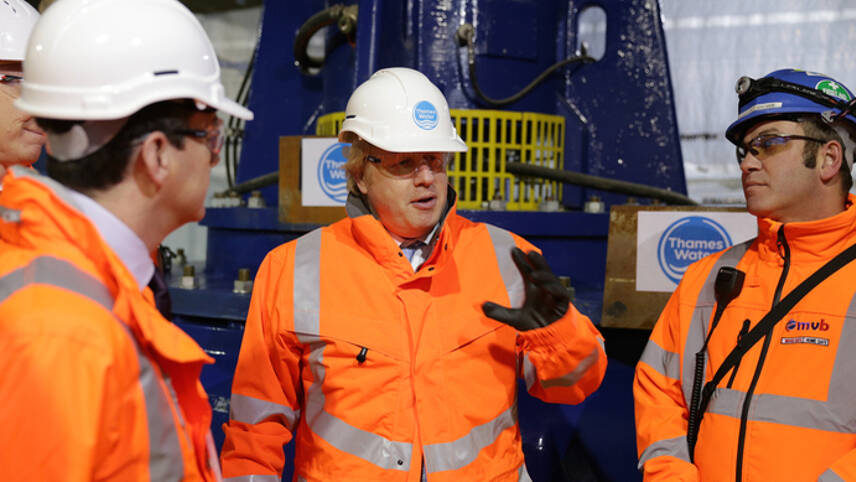Standard content for Members only
To continue reading this article, please login to your Utility Week account, Start 14 day trial or Become a member.
If your organisation already has a corporate membership and you haven’t activated it simply follow the register link below. Check here.

London mayor Boris Johnson has hailed the Lee Tunnel as a “massive achievement” for British engineering and a “testament to our ambition for infrastructure”.
Speaking at the official opening of the Tunnel in London, hosted by Thames Water, Johnson said it was “high time” the UK showed this kind of ambition in its infrastructure projects.
“For too long we’ve been putting it off, for too long we’ve been failing to address it… for too long, frankly, we have been going through the motions,” he said.
“This amazing new super sewer is providing the bold infrastructure needed to support the movements of our rapidly growing city. For years our historic Victorian systems have heaved at the seams, muddling along, battling to cope with the increasing rainfall and waste of a modern population.”
“Now the River Thames will benefit from vast improvements to its water quality with less pollution and overflow,” he added. “Alongside my sustainable drainage work to reduce flooding, the investment in the Lee and the forthcoming Thames Tideway Tunnel are set to benefit Londoners for generations to come.”
On average 39 million tonnes of untreated sewage mixed with rain water gets discharged into the River Thames from overloaded treatment works and combined sewer outfalls every year.
The biggest of these outfalls, at Abbey Mills pumping station, has been discharging 16 million tonnes of sewage per year to the River Lee.
The £678 million Lee Tunnel – the largest single project in the history of the privatised water industry in England and Wales, and the deepest ever bored under London at 75 metres deep – will capture this sewage to keep it out of the River Lee.
The Thames Tideway Tunnel will connect to the Lee Tunnel and will capture sewage from the remaining 34 combined sewer overflows, keeping it out of the River Thames
Combined with upgrades carried out by Thames Water at its five main sewage works along the River Thames, these tunnels will help “dramatically” improve the health of the capital’s rivers.
Construction on the Thames Tideway Tunnel is due to start later this year and is due to be completed by 2023. However, Tideway – the company in charge of the Tunnel – has said it wants to reduce the delivery timetable by up to two years.
Please login or Register to leave a comment.